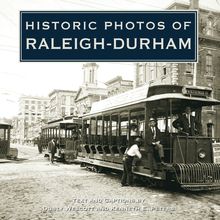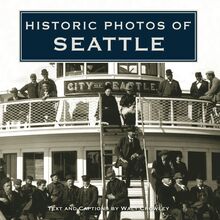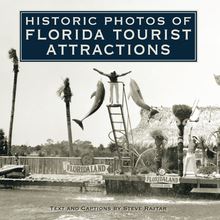Historic Photos of Hoboken , livre ebook
174
pages
English
Ebooks
2008
Vous pourrez modifier la taille du texte de cet ouvrage
Obtenez un accès à la bibliothèque pour le consulter en ligne En savoir plus
Découvre YouScribe en t'inscrivant gratuitement
Découvre YouScribe en t'inscrivant gratuitement
174
pages
English
Ebooks
2008
Vous pourrez modifier la taille du texte de cet ouvrage
Obtenez un accès à la bibliothèque pour le consulter en ligne En savoir plus
Publié par
Date de parution
15 juillet 2008
Nombre de lectures
1
EAN13
9781618586384
Langue
English
Poids de l'ouvrage
14 Mo
The history of Hoboken, New Jersey, is an American blue-collar success story. Once a riverside getaway for New Yorkers, the port city of Hoboken developed to become an integral part of the economic system of the entire area. With the city’s growth came immigrants who found work in the shipping, manufacturing, and transportation industries, and who placed their stamp on the city’s evolving culture. Hoboken became a draw for the many in other countries who yearned for that breath of fresh air on America’s golden shores.
In dramatic black-and-white, Historic Photos of Hoboken tells the story of this hardworking city on the Hudson River. Included are evocative views of nineteenth-century schools, churches, and storefront businesses; images of brave soldiers ready for service in World War I; and scenes of both economic vitality and sometimes tragedy in a city tied to the waterfront. Through its words and images, Historic Photos of Hoboken pays tribute to the resilience of this vibrant American city.
Publié par
Date de parution
15 juillet 2008
Nombre de lectures
1
EAN13
9781618586384
Langue
English
Poids de l'ouvrage
14 Mo
HISTORIC PHOTOS OF
HOBOKEN
T EXT AND C APTIONS BY J OE C ZACHOWSKI
Seen here on the Hudson in the late 1880s, the ferryboat Hackensack did not operate from its namesake New Jersey town but rather out of Hoboken. A number of the boats were named after towns such as Chautauqua, Passaic, and Hopatcong, whose names derived from Native American words.
HISTORIC PHOTOS OF
HOBOKEN
Turner Publishing Company
200 4th Avenue North Suite 950
Nashville, Tennessee 37219
(615) 255-2665
www.turnerpublishing.com
Historic Photos of Hoboken
Copyright 2008 Turner Publishing Company
All rights reserved.
This book or any part thereof may not be reproduced or transmitted in any form or by any means, electronic or mechanical, including photocopying, recording, or by any information storage and retrieval system, without permission in writing from the publisher.
Library of Congress Control Number: 2008901712
ISBN-13:978-1-59652-443-9
Printed in the United States of America
08 09 10 11 12 13 14-0 9 8 7 6 5 4 3 2 1
C ONTENTS
A CKNOWLEDGMENTS
P REFACE
H OBOKEN L AND AND I MPROVEMENT (1860-1899)
P ORT C ITY IN A N EW C ENTURY (1900-1929)
O FF AND O N THE W ATERFRONT (1930-1979)
N OTES ON THE P HOTOGRAPHS
The first of many piers built for the Holland-America Line is seen here the way it appeared in the late 1880s. The pier was 600 feet long by 80 feet wide and was one story tall. It was the correct size for the time, but it would grow much larger soon enough.
A CKNOWLEDGMENTS
With the exception of cropping images where needed and touching up imperfections that have accrued over time, no other changes have been made to the photographs in this volume. The caliber and clarity of many photographs are limited by the technology of the day and the ability of the photographer at the time they were made.
This volume, Historic Photos of Hoboken , is the result of the cooperation and efforts of many individuals, organizations, and corporations. It is with great thanks that we acknowledge the valuable contribution of the following for their generous support:
Hoboken Public Library
New Jersey State Archives; Department of State
P REFACE
If you study New Jersey history, you will invariably encounter somewhere a statement along the lines of New Jersey lives in the shadow of New York and Philadelphia. We roll with the punches here in Jersey, though, and have a few choice comments about that perception. However, when it comes to Hoboken specifically, the New Jersey port city did grow up in the shadow of a metropolis: New York. How Hoboken came into being, thrived, nearly died, and was revived, is a true American blue-collar success story.
In olden days Hoboken was a short boat ride from New York City, so in the bloom of spring, the wilting of summer, and the onset of autumn, New Yorkers would cross over the Hudson River and stroll along its western bank or through the Elysian Fields for a respite from the crowded city. Hoboken was a part of the natural harbor, so it was only a matter of time before it became an integral part of the economic system of the entire area. The city s growth brought immigrants looking for work, which they found first in the shipping business then in manufacturing and transportation. Hoboken became a hardworking, tough, immigrant city, a draw for the Italian, German, Dutch, Irish, and Eastern European masses who yearned for that breath of fresh air on America s golden shores.
Hoboken can claim its fair share of firsts. In 1663 America s first brewery was patented at Castle Point. With all apologies to Cooperstown, New York, Hoboken hosted the first organized baseball game, on June 19, 1846. The first zipper was manufactured by Hoboken s Automatic Hook Eye Company. Thomas Edison drove the first electrified train from Hoboken s Delaware, Lackawanna, Western Terminal to Montclair, New Jersey. Colonel John Stevens, whose family was responsible for establishing most of the town and also Stevens Institute of Technology, ran the first steam-powered ferry and implemented technical changes that enabled steam locomotives to be adapted from the English version to the American type that eventually spanned the continent. His son Robert Stevens designed the T-rail track still used in railroad engineering today. The Blimpie brand of fast-food sandwich was first served on Hoboken s Washington Street.
A Hoboken location served as inspiration for Edgar Allen Poe s eerie tale The Mystery of Marie Roget. The city s name has been used in entertainment settings from Looney Toons cartoons to a Twilight Zone episode. Hoboken s famous residents have included the artist Willem de Kooning, the actress and Titanic survivor Dorothy Gibson, the sex researcher Alfred Kinsey, the alternative rock band the Bongos, and that somewhat successful singer Francis Albert Sinatra.
With success comes eventual downturn. Hoboken s rise was high and fairly consistent for a number of decades, but its demise was swift. In the mid-1950s the city was used as a backdrop for the Academy Award-winning film On the Waterfront . The black-and-white film with its stark contrasts seemed to cast a pall over the real city. The shipyards began to close and were gone by the late 1960s. Manufacturing was relocated, and the city became depressed economically as well as socially and spiritually. The heart of the city became chilled. The sun continued to rise, however, and someone remembered what Hoboken was in the first place: a welcome respite from the city.
As business boomed in New York City, Hoboken s land value increased. Old factories and abandoned warehouses were either removed or converted to apartments and condominiums. A new wave of transplants came to Hoboken and brought it back to its former identity as a vibrant city of people, culture, and history. As I sat in a park across from the Hoboken Public Library, the air was filled with other tongues-Spanish, Italian, German-along with English, and with the laughter and delightful squeals of children playing; this is the same in any language. With the fall of the World Trade Center, just across a short span of the harbor, the city once again felt a great loss, yet it managed to overcome this tragedy to rebound and be in the sunlight once again.
-Joe Czachowski
Fischer s Boots Shoes was located on 1st Street, as seen in this view looking west.
H OBOKEN L AND AND I MPROVEMENT
(1860-1899)
Hoboken is a two-square-mile plot of land along the Hudson River. Of this, one and one-half miles is waterfront, and while dirt is gold in real estate, the city also possesses a harbor channel that is 60 feet deep.
Hoboken was first sighted by Henry Hudson from on board his Half Moon in 1609. The origin of the name Hoboken is in dispute as deriving from either the Lenape Indian Hopoghan or the Dutch/Flemish Hooge Buechen , or an actual Van Hoboken family from the Netherlands. The Old Dutch term Hoebuck , or high bluff, might be the proper fit. The town land was passed from Michael Pauw to Teunissen Van Patten to Samuel Bayard, who remained loyal to the English during the American Revolution. So after the war the newly confiscated land was purchased by Colonel John Stevens, who kept a parcel for his family and donated the rest to become Hoboken, the town his family would dominate for over 100 years.
Stevens developed the land as a resort for New Yorkers looking for a leisurely stroll on a fair day. He instituted the first steam ferry in 1811. The attraction Sybil s Cave opened in 1832, bringing guests to its spring waters and inspiring Edgar Allen Poe to write a mystery. Stevens then founded the Hoboken Land and Improvement Company; he and his family used the company to map out the city and develop its many uses, which included the waterfront. In 1870 the family established the Stevens Institute of Technology, one of the foremost technical schools in the nation, producing at least two Nobel Prize winners.
Hoboken s favorable location was not lost on potential developers of shipping interests. Terminals were built for many steamship lines, including North German Lloyd and Hamburg-American. This led to the presence of a large German population in the city in its early years. Dry docks were also built for construction and repair.
The growth of Hoboken was steady and rapid for a variety of reasons. Easy access from Europe was the main cause, not just from Germany but from all countries expunging their wretched refuse. Commercial growth expanded as well, and banking institutions were quickly established. The city was incorporated March 28, 1855, but it had been well on its way years before that official act.
Members of the Hoboken German Club, also known as the Union Club, have gathered for the day s events, which probably included posing for this mid-1860s photograph. The club was organized in 1857, and the building was located at the northwest corner of 6th and Hudson streets.
The Martha Institute at 6th Street and Park Avenue was established in the 1860s as an industrial-arts training school for boys. It later housed the Stanley Society, named for the well-known explorer Henry Morton Stanley and dedicated to the study of Africa.
During the Civil War, Captain William Hexamer, at left, commanded 151 Hoboken volunteers in Battery A of the 1st New Jersey Artillery. The Hoboken unit served in 40 major engagements and has monuments dedicated to it on the battlefields of Gettysburg and Antietam. Captain Hexamer died in Hoboken in 1870.
St. Mary s Hospital was founded in this building in 1863. It is hard to overstate the importance to Hoboken of this hospital, which grew with the community. As a Catholic hospital, its mission included care for the poor. It served as an embarkation hospital before World War I and as a convalescent hospital after, and it was a haven during the influenza epidemic of 1918.
By 1866, three years after its founding, St. Mary s Hospital had already been enlarged. It would b














